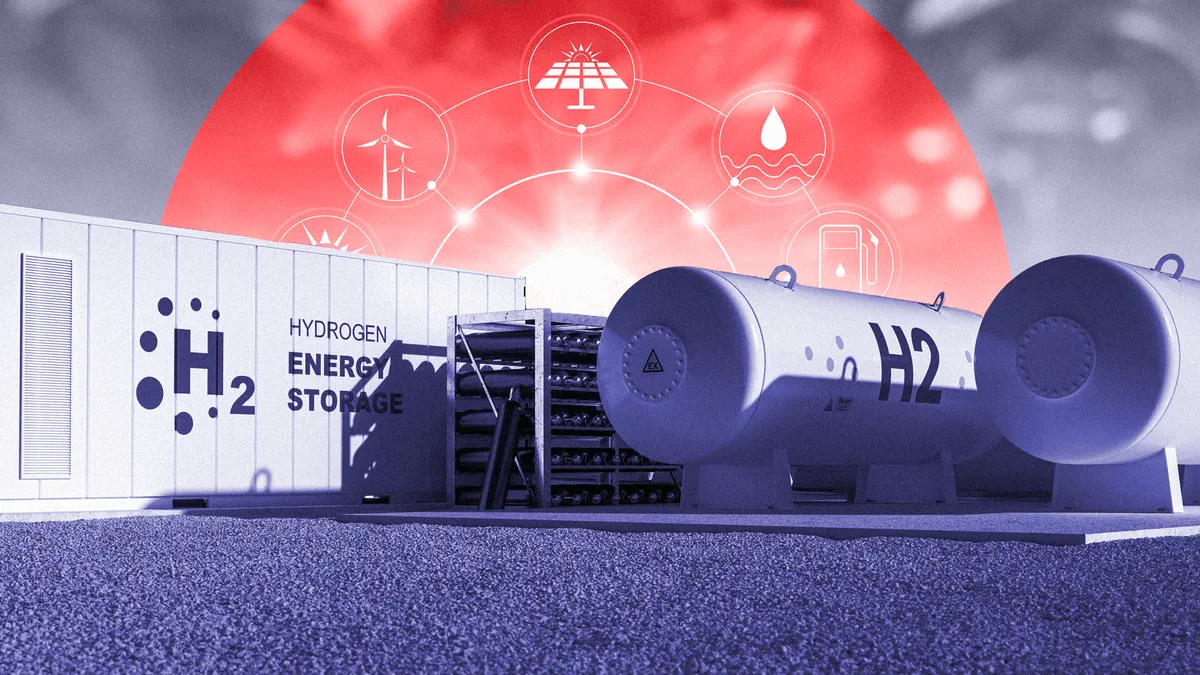Dive Brief:
-
Hydrogen could account for 15% of global energy generation by 2050, but must first overcome an economic "stumbling block," according to a recent report by S&P Global Ratings.
-
Economic viability for green hydrogen would require a 50% decrease in renewable energy costs, and a 30-50% reduction in the cost of electrolysis — declines within the realm of possibility, but likely not before 2030, according to S&P analysts.
-
Mona Dajani, an attorney who leads the hydrogen section of the law firm Pillsbury, believes the transition could happen faster than S&P predicts — key projects are already in the works today, she says.
Dive Insight:
Hydrogen could play a key role in a global energy transition if states and nations continue to pursue greater clean energy ambitions and begin to offer more concrete incentives to spur hydrogen adoption, according to S&P Global Ratings Analysts Massimo Schiavo and Karl Nietvelt. But according to their Nov. 19 report, energy transitions typically play out over the course of decades, and it could be another ten years before hydrogen can compete on price.
Hydrogen could become cost competitive if solar or wind production costs fall below $30/MWh, and if the capital cost of electrolyzers also declines by 30-50%, according to the S&P analysis. Achieving this, the analysts believe, would require aggressive government policies and a power mix comprised of at least 70-80% renewable energy.
As this is unlikely to occur before 2030, large-scale adoption of hydrogen to heat buildings and generate power is likely decades out, according to the S&P report, which concludes hydrogen will be primarily reserved for use in commercial transportation in the near future.
Hydrogen would enable a more cost-effective means of transporting energy via pipelines instead of high-voltage transmission wires, the report notes, and hydrogen fuel cells have greater range and recharge faster than batteries in use in the automobile industry. Clean energy and decarbonization policies, as well as government incentives, could encourage the adoption of hydrogen and accelerate the industry's ability to achieve economies of scale, according to the report authors.
"Blue" hydrogen, produced from natural gas and coupled with carbon capture and sequestration, could help to provide a bridge until "green" or zero-emission carbon becomes more widely available, according to the report.
But Dajani, the hydrogen attorney, said projects using many of the technologies and resources identified as necessary in the S&P report are already underway — suggesting the transition S&P puts beyond 2030 is already happening at a greater rate than the report predicts.
"Nobody is saying there will be a 100% hydrogen economy by 2030," she said. "The work is underway now because we do expect that it will take some time."
Electrolysis costs, for example, are already falling as the industry begins to contemplate larger projects and production capacity, Dajani said. Demand for hydrogen is already "insatiable" in Europe and Asia, she said, and in the U.S. key industrial sectors — including finance and big oil — have begun to look to hydrogen as a way to pivot in line with the energy transition.
"I'm getting calls daily from funds and private equities, and they really want to get into this," Dajani said. "I'm working with so many companies along the value chain — big oil, electrolyzer developers, energy storage. It's here."













